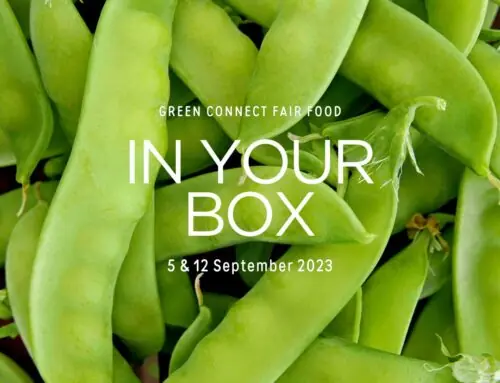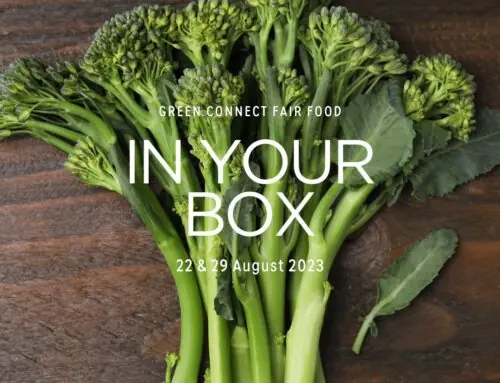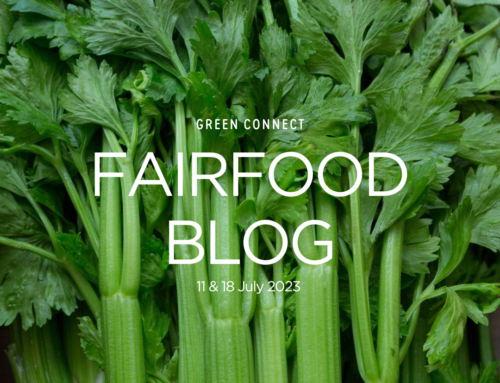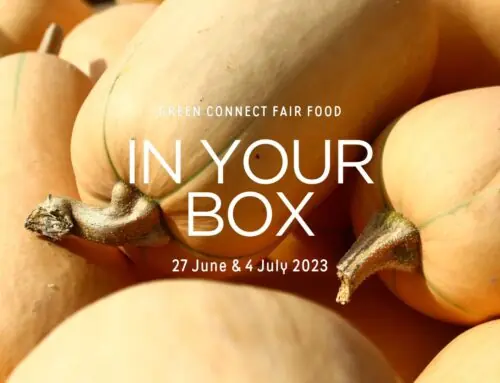Bug Battle
 A battle is unfolding at the farm – us against aphids! They are attempting a takeover of our brassicas, including kale, broccoli, and cauliflower crops, but we are putting up a fight.
A battle is unfolding at the farm – us against aphids! They are attempting a takeover of our brassicas, including kale, broccoli, and cauliflower crops, but we are putting up a fight.
Pests are a top challenge for farmers the world over. Conventional farms commonly use synthetic, non-organic chemicals to control pests. This action broadly kills other insects and microbes, effectively wiping out soil microbiology and doing a lot of harm. Our commitment to growing organically, for the benefit of people and the planet, means we must find other strategies.
Preventative strategies, such as constantly improving soil health, rotating crops, and companion planting, as well as using certified organic treatments when issues arise, are often enough to keep pest problems at bay. But this season the aphids are particularly bad and it’s apparent we need extra reinforcements.
We recently received 2500 green lacewing eggs from an Australian company called ‘Bugs For Bugs’ for release at the farm. They are the most common and widely distributed native lacewing in Australia and their larvae naturally feed on small insects, including aphids. By strategically placing the ‘release boxes’, which contain the eggs, in the worst affected beds, they should provide an efficient hotspot treatment where they are needed most. It’s still too early to tell how well our larvae are feasting, but we are hoping for positive results!
The more we can build local biodiversity, the more these kinds of relationships will happen naturally. The goal in farming doesn’t have to be to eradicate pests altogether. It can be to balance out the agro-ecosystem, so that we have multiple insects doing their thing, rather than a few pests dominating the ecosystem. It is a more costly and nuanced approach, but we think it’s worth it, for the health of planet and ourselves.
FYI – You can also purchase smaller ‘garden packs’ of bugs such as lacewing larvae, so a couple of our volunteers are considering trying them at home too!
In your box on Tuesday 1 August 2023:
In your box on Tuesday 25 July 2023:
Note: We sometimes need to make changes to what we pack in your veg box based on the quantity or quality of produce that we can harvest and source. If you have any questions about what is in your box, don’t hesitate to contact us at fairfood@green-connect.com.au.
Feature Veg: Water Celery, Cauliflower, Leek
 Water celery (also known as water dropwort or water parsley) is an aquatic plant that grows well in the damp gullies between the swales we’ve built around the farm to passively catch water. It’s a bit like parsley but with a celery taste. Enjoy it raw in salads or as garnish in a huge range of dishes. The luscious stalks are also delicious chopped up in a stir-fry.
Water celery (also known as water dropwort or water parsley) is an aquatic plant that grows well in the damp gullies between the swales we’ve built around the farm to passively catch water. It’s a bit like parsley but with a celery taste. Enjoy it raw in salads or as garnish in a huge range of dishes. The luscious stalks are also delicious chopped up in a stir-fry.
 Did you know the white cauliflower head or ‘curd’ is an immature cluster of flowers? Cauliflower, a relative of broccoli, cabbage, turnips, and other brassicas, is SO versatile in the kitchen! When cooked, its texture stays firm but becomes tender and it readily absorbs accompanying flavours. Try pureeing it for a sauce, chopping into rice, adding it to a curry, soup, pasta, or stir‐fry, roasting it whole, or eating it raw. The leaves and stem can be eaten too!
Did you know the white cauliflower head or ‘curd’ is an immature cluster of flowers? Cauliflower, a relative of broccoli, cabbage, turnips, and other brassicas, is SO versatile in the kitchen! When cooked, its texture stays firm but becomes tender and it readily absorbs accompanying flavours. Try pureeing it for a sauce, chopping into rice, adding it to a curry, soup, pasta, or stir‐fry, roasting it whole, or eating it raw. The leaves and stem can be eaten too!

Don’t underestimate the humble leek! Leeks are members of the allium family and have a sweet, mild, and onion-y flavour. They can be used in the same way as onions or shallots in most recipes and are great in soups, stews, pastas, risottos, and more! They can also be grilled or roasted on their own to create a delicious side dish. Add the green leaves to stir-fries, making sure to cook them longer to soften them up, or boil them up in your soup stock. Leeks last up to 2 weeks in a veggie crisper and should be cut and washed well before cooking.









